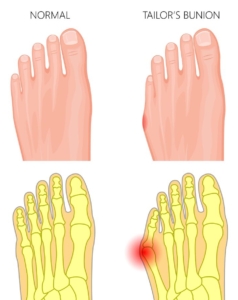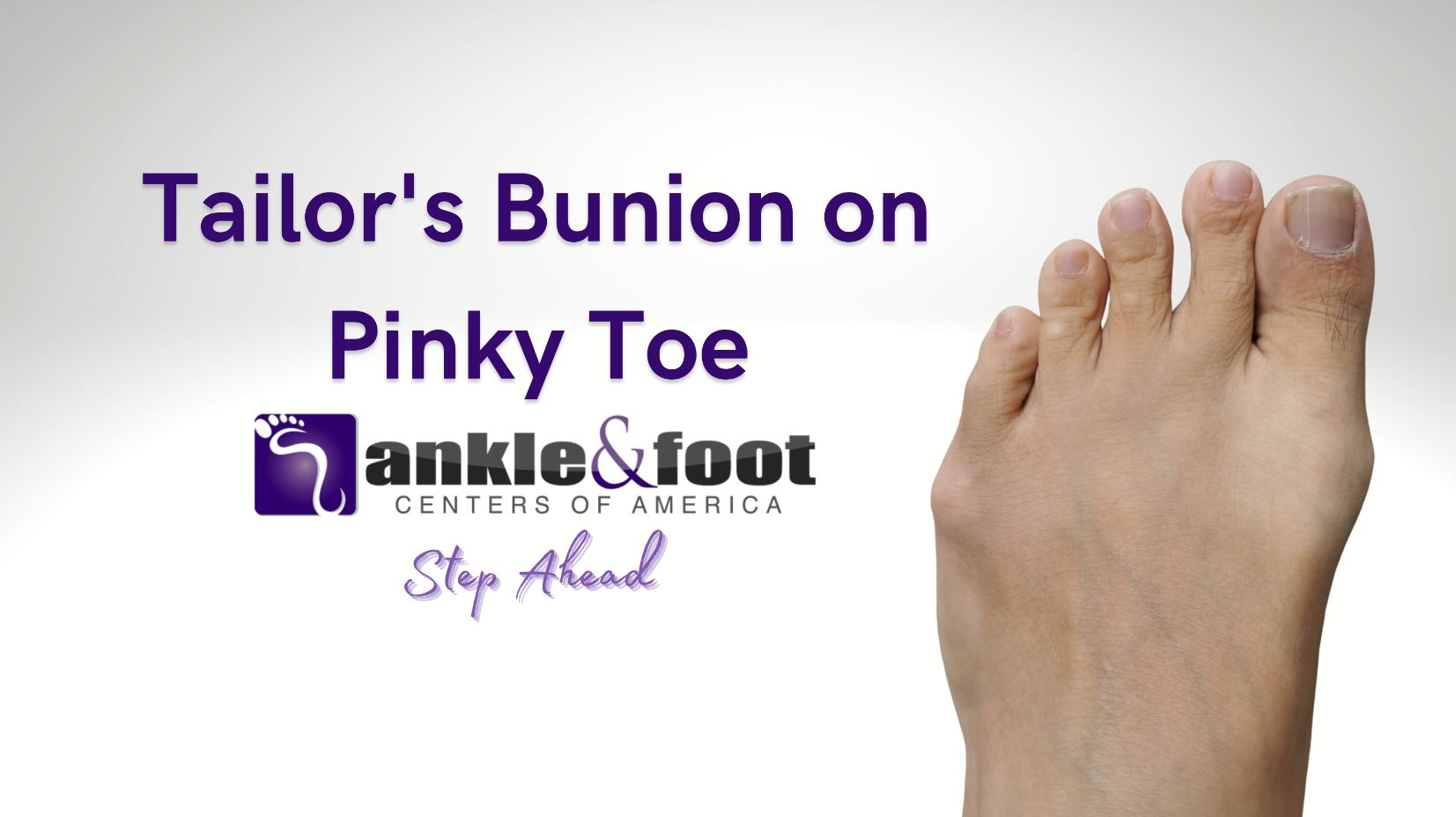 A bunionette, also known as a tailor’s bunion, is a bony prominence that develops on the outside of the foot, near the little toe. It is a common foot deformity that can cause discomfort, pain, and even difficulty walking. In this blog post, we will discuss what causes a tailor’s bunion, its symptoms, and various treatment options.
A bunionette, also known as a tailor’s bunion, is a bony prominence that develops on the outside of the foot, near the little toe. It is a common foot deformity that can cause discomfort, pain, and even difficulty walking. In this blog post, we will discuss what causes a tailor’s bunion, its symptoms, and various treatment options.
Table of Contents
What is a Tailor’s Bunion?
It is caused by a misalignment of the fifth metatarsal bone, leading to the formation of a bony bump on the pinky toe side of the foot. This deformity is similar to a traditional bunion, which forms on the big toe, but occurs on the outside of the foot near the little toe.
Tailor’s bunions are more common in women than in men, and can be hereditary. People who have a family history of foot deformities, or those who have flat feet or high arches, are more likely to develop a tailor’s bunion. Wearing shoes that are too narrow, too tight, or that have high heels can also contribute to the development a bunion on pinky toe.

Symptoms of a Tailor’s Bunion
 The most common symptoms of a tailor’s bunion include pain and discomfort in the affected area, redness, swelling, and difficulty walking. A pinky toe bunion can also cause rubbing against shoes, leading to calluses and corns. In severe cases, the little toe may become curled under or over the adjacent toe, leading to further discomfort.
The most common symptoms of a tailor’s bunion include pain and discomfort in the affected area, redness, swelling, and difficulty walking. A pinky toe bunion can also cause rubbing against shoes, leading to calluses and corns. In severe cases, the little toe may become curled under or over the adjacent toe, leading to further discomfort.
The pain from a tailor’s bunion can range from mild to severe, and can make it difficult to wear shoes and walk comfortably. Diagnosis and treatment options become available once a qualified podiatrist diagnoses a tailor’s bunion through a physical exam and imaging tests, such as x-rays. Once a diagnosis is made, there are several treatment options available, ranging from conservative to surgical.
How to Get Rid of a Bunionette Without Surgery
 While surgery is an option for severe cases, many people prefer to manage the condition without going under the knife. There are a number of non-surgical treatments that can help relieve pain and improve the alignment of the foot.
While surgery is an option for severe cases, many people prefer to manage the condition without going under the knife. There are a number of non-surgical treatments that can help relieve pain and improve the alignment of the foot.
Here are some effective ways to get rid of a tailor’s bunion without surgery:
- Footwear modification: Wearing shoes with a wider toe box and avoiding shoes that are too narrow or tight can help relieve pressure on the Tailor’s Bunion. It’s important to choose shoes that provide ample room for the toes and avoid high heels, which can worsen symptoms.
- Foot orthotics: Custom-made orthotics can help realign the foot and distribute weight evenly, reducing pressure on the bunionette. Orthotics can also provide cushioning and support to help relieve pain.
- Physical therapy: Stretching and strengthening exercises can help improve the mobility of the foot and alleviate pain. A physical therapist can help develop an individualized exercise plan to target the specific muscles and joints affected by a tailor’s bunion.
- Foot braces: Wearing a bunion splint or foot brace can help keep the foot in proper alignment and relieve pressure on the bunionette. A brace can also provide support and stability to help reduce pain and discomfort.
- Bunion pads: Placing a bunion pad on the affected area can help cushion the Tailor’s and reduce pain. Bunion pads can be purchased over-the-counter or custom-made by a podiatrist.
- Ice therapy: Applying ice to the affected area can help reduce swelling and relieve pain. Wrap an ice pack in a towel and apply it for 15-20 minutes at a time, several times a day.
- Pain relievers: Over-the-counter pain relievers, such as ibuprofen or acetaminophen, can help relieve pain and reduce swelling.
It’s important to note that not all treatments are appropriate for every person. It’s important to seek the advice of a doctor or podiatrist to determine the best course of treatment for your specific case. With the right combination of non-surgical treatments, it is possible to manage the discomfort and pain of a tailor’s bunion and maintain a healthy, active lifestyle.

Tailor’s Bunion Surgery
In severe cases, surgery may be necessary to correct the deformity and relieve pain. However, this should be considered as a last resort after other treatments have failed. Tailor’s bunion surgery involves removing the bony prominence and realigning the fifth metatarsal bone. The procedure can be performed using minimally invasive techniques or traditional open surgery, and recovery time can vary depending on the extent of the procedure.
During the surgery, the bony bump is removed, and the position of the bones is corrected to improve alignment and alleviate discomfort. This can be done through either an open or minimally invasive procedure, depending on the severity of the bunion and the surgeon’s preferred technique. The recovery time for Tailor’s bunion surgery varies, but typically involves several weeks of wearing a protective boot or cast, physical therapy, and avoiding weight-bearing activities. Pain and swelling can be managed with over-the-counter or prescription medication, and most people experience a significant reduction in pain and improved function after the surgery.
It is important to seek treatment for a bunionette as soon as symptoms develop. Left untreated, the condition can become more severe and cause ongoing discomfort and pain. A podiatrist or foot and ankle specialist can provide a comprehensive evaluation and recommend the best course of treatment for your specific case.






